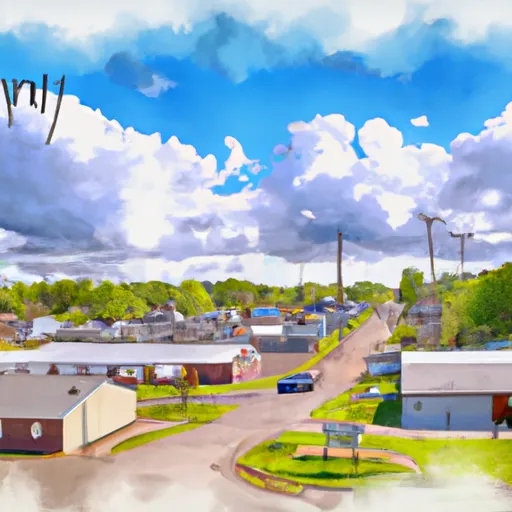-
 Snoflo Premium
Snoflo Premium
Get unlimited access to all our content
With no Ad interruptions! - Start Your Free Trial Login with existing account
Hovland
Eden Index
Climate
4.8
•
Recreation
3.8
•
Community
•
Safeguard
3.2/10

Hovland, Minnesota is a small unincorporated community located in Cook County, along the picturesque North Shore of Lake Superior. The climate in Hovland is characterized by cool summers and cold winters, influenced by its proximity to the lake. The average temperature in summer ranges from 55°F to 70°F, while winter temperatures can drop below freezing, with an average snowfall of 70 inches.
The area around Hovland boasts an abundance of natural beauty and outdoor recreational opportunities. The landscape is dotted with numerous lakes, rivers, and streams, making it a haven for fishing enthusiasts. Anglers can try their luck catching trout, walleye, northern pike, and more. Hiking trails, such as the Superior Hiking Trail and numerous state parks, offer breathtaking views of waterfalls, cliffs, and forests, making it a haven for outdoor adventurers. Additionally, the nearby Boundary Waters Canoe Area Wilderness provides opportunities for canoeing, kayaking, and camping in a pristine wilderness setting.
In terms of hydrology constituents, Hovland benefits from the pristine waters of Lake Superior, which provide opportunities for boating, sailing, and swimming. The area is also known for its clean, fresh air and the tranquility of its natural surroundings, making it an ideal destination for those seeking a peaceful retreat.
What is the Eden Index?
The Snoflo Eden Index serves as a comprehensive rating system for regions, evaluating their desirability through a holistic assessment of climate health, outdoor recreation opportunities, and natural disaster risk, acknowledging the profound impact of these factors on livability and well-being.
Climate Health Indicator (CHI): 4.8
Hovland receives approximately
819mm of rain per year,
with humidity levels near 81%
and air temperatures averaging around
3°C.
Hovland has a plant hardyness factor of
4, meaning
plants and agriculture in this region thrive during a short period during spring and early summer. Most
plants will die off during the colder winter months.
By considering the ideal temperature range, reliable water supplies, clean air, and stable seasonal rain or snowpacks, the Climate Health Indicator (CHI) underscores the significance of a healthy climate as the foundation for quality living.
A healthy climate is paramount for ensuring a high quality of life and livability in a region, fostering both physical well-being and environmental harmony. This can be characterized by ideal temperatures, reliable access to water supplies, clean air, and consistent seasonal rain or snowpacks.
Weather Forecast
Streamflow Conditions
Northwestern Lake Superior
Area Rivers
Northwestern Lake Superior
Snowpack Depths
Northwestern Lake Superior
Reservoir Storage Capacity
Northwestern Lake Superior
Groundwater Levels
Recreational Opportunity Index (ROI): 3.8
The Recreational Opportunity Index (ROI) recognizes the value of outdoor recreational options, such as parks, hiking trails, camping sites, and fishing spots, while acknowledging that climate plays a pivotal role in ensuring the comfort and consistency of these experiences.
Access to outdoor recreational opportunities, encompassing activities such as parks, hiking, camping, and fishing, is crucial for overall well-being, and the climate plays a pivotal role in enabling and enhancing these experiences, ensuring that individuals can engage in nature-based activities comfortably and consistently.
Camping Areas
| Campground | Campsites | Reservations | Toilets | Showers | Elevation |
|---|---|---|---|---|---|
| DLo Water Park | None | 312 ft | |||
| Bayou Segnette State Park | None | 0 ft | |||
| Lefleurs Bluff State Park | None | 288 ft | |||
| New Orleans Reserve Military | None | 0 ft | |||
| Lake Mary Crawford | 20 | 293 ft | |||
| Fairview Riverside State Park | None | 4 ft | |||
| Fontainebleau State Park | None | 18 ft | |||
| Timberlake - Ross Barnett Reservoir | 289 | 331 ft | |||
| Atwood Water Park | None | 218 ft | |||
| St. Bernard State Park | None | 3 ft |
Nearby Fishing
Nearby Ski Areas
Catastrophe Safeguard Index (CSI):
The Catastrophe Safeguard Index (CSI) recognizes that natural disaster risk, encompassing floods, fires, hurricanes, and tornadoes, can drastically affect safety and the overall appeal of an area.
The level of natural disaster risk in a region significantly affects safety and the overall livability, with climate change amplifying these risks by potentially increasing the frequency and intensity of events like floods, fires, hurricanes, and tornadoes, thereby posing substantial challenges to community resilience and well-being.
Community Resilience Indicator (CRI):
The Community Resilience Indicator (CRI) recognizes that education, healthcare, and socioeconomics are crucial to the well-being of a region. The CRI acknowledges the profound impact of these elements on residents' overall quality of life. By evaluating educational resources, healthcare accessibility, and economic inclusivity, the index captures the essential aspects that contribute to a thriving community, fostering resident satisfaction, equity, and social cohesion.

